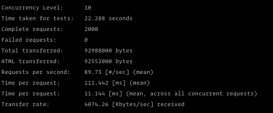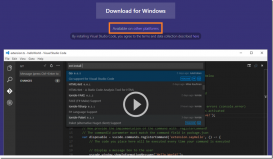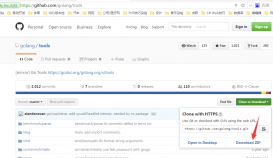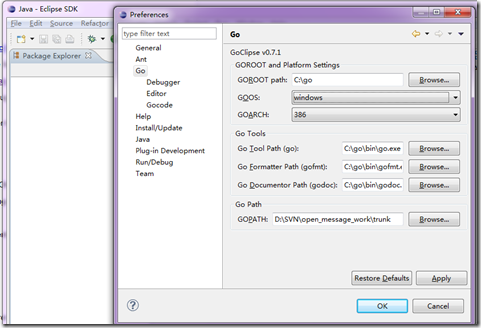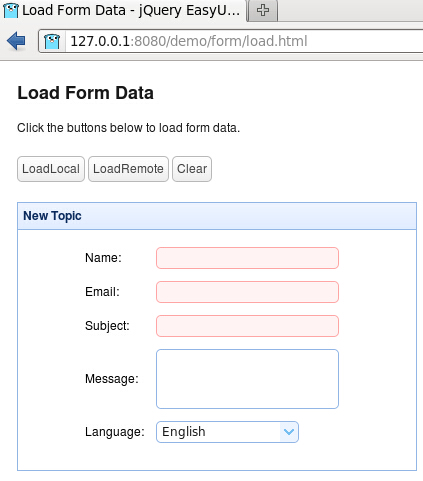概述
在 Go 语言中,context(上下文)是一个非常重要的概念。
它主要用于在多个 goroutine 之间传递请求特定任务的截止日期、取消信号以及其他请求范围的值。3. Context 的取消与超时
本文将探讨 Go 语言中context的用法,从基础概念到实际应用,将全面了解上下文的使用方法。
主要内容包括
什么是 Context(上下文)
Context 的基本用法:创建与传递
Context 的取消与超时
Context 的值传递
实际应用场景:HTTP 请求的 Context 使用
数据库操作中的 Context 应用
自定义 Context 的实现
Context 的生命周期管理
Context 的注意事项
1. 什么是 Context(上下文)
在 Go 语言中,context(上下文)是一个接口,定义了四个方法:Deadline()、Done()、Err()和Value(key interface{})。
它主要用于在 goroutine 之间传递请求的截止日期、取消信号以及其他请求范围的值。
2. Context 的基本用法:创建与传递
2.1 创建 Context
package main
import (
"context"
"fmt"
)
func main() {
// 创建一个空的Context
ctx := context.Background()
// 创建一个带有取消信号的Context
_, cancel := context.WithCancel(ctx)
defer cancel() // 延迟调用cancel,确保在函数退出时取消Context
fmt.Println("Context创建成功")
}
以上代码演示了如何创建一个空的context和一个带有取消信号的context。
使用context.WithCancel(parent)可以创建一个带有取消信号的子context。
在调用cancel函数时,所有基于该context的操作都会收到取消信号。
2.2 传递 Context
package main
import (
"context"
"fmt"
"time"
)
func worker(ctx context.Context) {
for {
select {
case <-ctx.Done():
fmt.Println("收到取消信号,任务结束")
return
default:
fmt.Println("正在执行任务...")
time.Sleep(1 * time.Second)
}
}
}
func main() {
ctx := context.Background()
ctxWithCancel, cancel := context.WithCancel(ctx)
defer cancel()
go worker(ctxWithCancel)
time.Sleep(3 * time.Second)
cancel() // 发送取消信号
time.Sleep(1 * time.Second)
}
在上面例子中,创建了一个带有取消信号的context,并将它传递给一个 goroutine 中的任务。
调用cancel函数,可以发送取消信号,中断任务的执行。
3.Context 的取消与超时
3.1 使用 Context 实现取消
package main
import (
"context"
"fmt"
"time"
)
func main() {
ctx := context.Background()
ctxWithCancel, cancel := context.WithCancel(ctx)
go func() {
select {
case <-ctxWithCancel.Done():
fmt.Println("收到取消信号,任务结束")
case <-time.After(2 * time.Second):
fmt.Println("任务完成")
}
}()
time.Sleep(1 * time.Second)
cancel() // 发送取消信号
time.Sleep(1 * time.Second)
}
在这个例子中,使用time.After函数模拟一个长时间运行的任务。
如果任务在 2 秒内完成,就打印“任务完成”,否则在接收到取消信号后打印“收到取消信号,任务结束”。
3.2 使用 Context 实现超时控制
package main
import (
"context"
"fmt"
"time"
)
func main() {
ctx := context.Background()
ctxWithTimeout, cancel := context.WithTimeout(ctx, 2*time.Second)
defer cancel()
select {
case <-ctxWithTimeout.Done():
fmt.Println("超时,任务结束")
case <-time.After(1 * time.Second):
fmt.Println("任务完成")
}
}
在上面例子中,使用context.WithTimeout(parent, duration)函数创建了一个在 2 秒后自动取消的context
如果任务在 1 秒内完成,就打印“任务完成”,否则在 2 秒后打印“超时,任务结束”。
4. Context 的值传递
4.1 使用 WithValue 传递值
package main
import (
"context"
"fmt"
)
type key string
func main() {
ctx := context.WithValue(context.Background(), key("name"), "Alice")
value := ctx.Value(key("name"))
fmt.Println("Name:", value)
}
在上面例子中,使用context.WithValue(parent, key, value)函数在context中传递了一个键值对。
使用ctx.Value(key)函数可以获取传递的值。
5. 实际应用场景:HTTP 请求的 Context 使用
5.1 使用 Context 处理 HTTP 请求
package main
import (
"fmt"
"net/http"
"time"
)
func handler(w http.ResponseWriter, r *http.Request) {
ctx := r.Context()
select {
case <-time.After(3 * time.Second):
fmt.Fprintln(w, "Hello, World!")
case <-ctx.Done():
err := ctx.Err()
fmt.Println("处理请求:", err)
http.Error(w, err.Error(), http.StatusInternalServerError)
}
}
func main() {
http.HandleFunc("/", handler)
http.ListenAndServe(":8080", nil)
}
在上面例子中,使用http.Request结构体中的Context()方法获取到请求的context,并在处理请求时设置了 3 秒的超时时间。
如果请求在 3 秒内完成,就返回“Hello, World!”,否则返回一个错误。
5.2 处理 HTTP 请求的超时与取消
package main
import (
"context"
"fmt"
"net/http"
"time"
)
func handler(w http.ResponseWriter, r *http.Request) {
ctx, cancel := context.WithTimeout(r.Context(), 2*time.Second)
defer cancel()
select {
case <-time.After(3 * time.Second):
fmt.Fprintln(w, "Hello, World!")
case <-ctx.Done():
err := ctx.Err()
fmt.Println("处理请求:", err)
http.Error(w, err.Error(), http.StatusInternalServerError)
}
}
func main() {
http.HandleFunc("/", handler)
http.ListenAndServe(":8080", nil)
}
在上面例子中,使用context.WithTimeout(parent, duration)函数为每个请求设置了 2 秒的超时时间。
如果请求在 2 秒内完成,就返回“Hello, World!”,否则返回一个错误。
6. 数据库操作中的 Context 应用
6.1 使用 Context 控制数据库查询的超时
package main
import (
"context"
"database/sql"
"fmt"
"time"
_ "github.com/go-sql-driver/mysql"
)
func main() {
db, err := sql.Open("mysql", "username:password@tcp(localhost:3306)/database")
if err != nil {
fmt.Println(err)
return
}
defer db.Close()
ctx, cancel := context.WithTimeout(context.Background(), 2*time.Second)
defer cancel()
rows, err := db.QueryContext(ctx, "SELECT * FROM users")
if err != nil {
fmt.Println("查询出错:", err)
return
}
defer rows.Close()
// 处理查询结果
}
在上面例子中,使用context.WithTimeout(parent, duration)函数为数据库查询设置了 2 秒的超时时间,确保在 2 秒内完成查询操作。
如果查询超时,程序会收到context的取消信号,从而中断数据库查询。
6.2 使用 Context 取消长时间运行的数据库事务
package main
import (
"context"
"database/sql"
"fmt"
"time"
_ "github.com/go-sql-driver/mysql"
)
func main() {
db, err := sql.Open("mysql", "username:password@tcp(localhost:3306)/database")
if err != nil {
fmt.Println(err)
return
}
defer db.Close()
tx, err := db.Begin()
if err != nil {
fmt.Println(err)
return
}
ctx, cancel := context.WithTimeout(context.Background(), 2*time.Second)
defer cancel()
go func() {
<-ctx.Done()
fmt.Println("接收到取消信号,回滚事务")
tx.Rollback()
}()
// 执行长时间运行的事务操作
// ...
err = tx.Commit()
if err != nil {
fmt.Println("提交事务出错:", err)
return
}
fmt.Println("事务提交成功")
}
在这个例子中,使用context.WithTimeout(parent, duration)函数为数据库事务设置了 2 秒的超时时间。
同时使用 goroutine 监听context的取消信号。
在 2 秒内事务没有完成,程序会收到context的取消信号,从而回滚事务。
7. 自定义 Context 的实现
7.1 实现自定义的 Context 类型
package main
import (
"context"
"fmt"
"time"
)
type MyContext struct {
context.Context
RequestID string
}
func WithRequestID(ctx context.Context, requestID string) *MyContext {
return &MyContext{
Context: ctx,
RequestID: requestID,
}
}
func (c *MyContext) Deadline() (deadline time.Time, ok bool) {
return c.Context.Deadline()
}
func (c *MyContext) Done() <-chan struct{} {
return c.Context.Done()
}
func (c *MyContext) Err() error {
return c.Context.Err()
}
func (c *MyContext) Value(key interface{}) interface{} {
if key == "requestID" {
return c.RequestID
}
return c.Context.Value(key)
}
func main() {
ctx := context.Background()
ctxWithRequestID := WithRequestID(ctx, "12345")
requestID := ctxWithRequestID.Value("requestID").(string)
fmt.Println("Request ID:", requestID)
}
在这个例子中,实现了一个自定义的MyContext类型,它包含了一个RequestID字段。
通过WithRequestID函数,可以在原有的context上附加一个RequestID值,然后在需要的时候获取这个值。
7.2 自定义 Context 的应用场景
自定义context类型的应用场景非常广泛,比如在微服务架构中,
可在context中加入一些额外的信息,比如用户 ID、请求来源等,以便在服务调用链路中传递这些信息。
8. Context 的生命周期管理
8.1 Context 的生命周期
context.Context 是不可变的,一旦创建就不能修改。它的值在传递时是安全的,可以被多个 goroutine 共享。
在一个请求处理的生命周期内,通常会创建一个顶级的 Context,然后从这个顶级的 Context 派生出子 Context,传递给具体的处理函数。
8.2 Context 的取消
当请求处理完成或者发生错误时,应该主动调用 context.WithCancel 或 context.WithTimeout 等函数创建的 Context 的 Cancel 函数来通知子 goroutines 停止工作。
这样可以确保资源被及时释放,避免 goroutine 泄漏。
func handleRequest(ctx context.Context) {
// 派生一个新的 Context,设置超时时间
ctx, cancel := context.WithTimeout(ctx, time.Second)
defer cancel() // 确保在函数退出时调用 cancel,防止资源泄漏
// 在这个新的 Context 下进行操作
// ...
}
8.3 Context 的传递
在函数之间传递 Context 时,确保传递的是必要的最小信息。避免在函数间传递整个 Context,而是选择传递 Context 的衍生物。
如 context.WithValue 创建的 Context,其中包含了特定的键值对信息。
func middleware(next http.Handler) http.Handler {
return http.HandlerFunc(func(w http.ResponseWriter, r *http.Request) {
// 从请求中获取特定的信息
userID := extractUserID(r)
// 将特定的信息存储到 Context 中
ctx := context.WithValue(r.Context(), userIDKey, userID)
// 将新的 Context 传递给下一个处理器
next.ServeHTTP(w, r.WithContext(ctx))
})
}
9. Context 的注意事项
9.1 不要在函数签名中传递 Context
避免在函数的参数列表中传递 context.Context,除非确实需要用到它。
如果函数的逻辑只需要使用 Context 的部分功能,那么最好只传递它需要的具体信息,而不是整个 Context。
// 不推荐的做法
func processRequest(ctx context.Context) {
// ...
}
// 推荐的做法
func processRequest(userID int, timeout time.Duration) {
// 使用 userID 和 timeout,而不是整个 Context
}
9.2 避免在结构体中滥用 Context
不要在结构体中保存 context.Context,因为它会增加结构体的复杂性。
若是需要在结构体中使用 Context 的值,最好将需要的值作为结构体的字段传递进来。
type MyStruct struct {
// 不推荐的做法
Ctx context.Context
// 推荐的做法
UserID int
}
原文地址:https://mp.weixin.qq.com/s/_IkMo8uBByR5YS6ETy3rog





